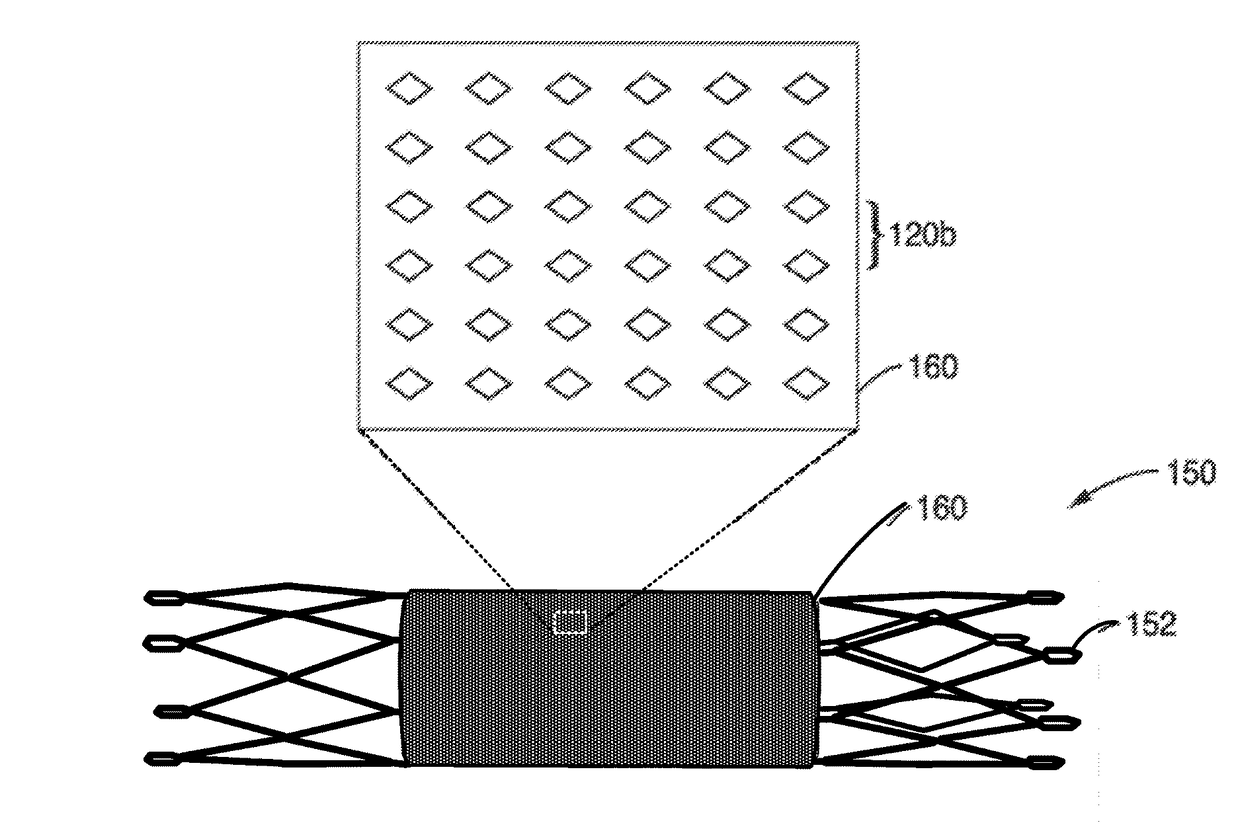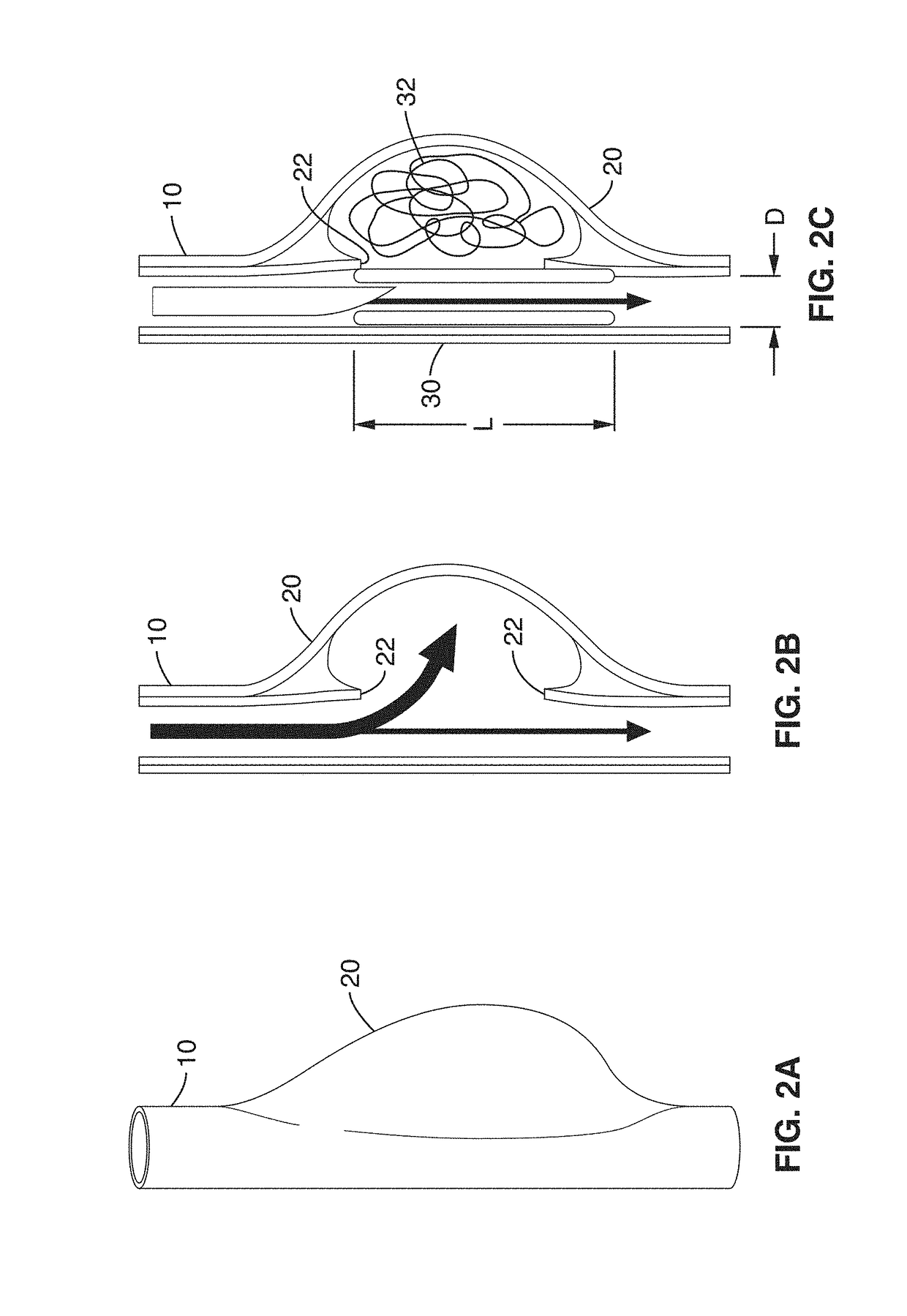Thin film vascular stent and biocompatible surface treatment
a vascular stent and thin film technology, applied in the field of implantable devices, can solve the problems of life-threatening hemorrhage, high morbidity and mortality, and inapplicability of aneurysm rupture, and achieve the effect of more freely bending
- Summary
- Abstract
- Description
- Claims
- Application Information
AI Technical Summary
Benefits of technology
Problems solved by technology
Method used
Image
Examples
embodiment 1
[0288]2. An implant , wherein the super-hydrophilic surface has a water contact angle of less than approximately 5 degrees.
[0289]3. An implant according to embodiment 1, wherein the super-hydrophilic surface is configured to deter platelet adhesion at a rate of less than 3 parts per mm2 when subjected to platelet rich plasma for 3 or more hours.
[0290]4. An implant according to embodiment 1, wherein the hydrophilic surface is fabricated by a method comprising the following: immersion of the thin film in a hydrogen peroxide solution.
embodiment 4
[0291]5. An implant , wherein the method further comprises: passivation of the thin film in a nitric acid solution prior to immersion of the thin film in a hydrogen peroxide solution.
embodiment 5
[0292]6. An implant , wherein the method further comprises: immersion of the thin film in a buffered oxide etchant to eliminate the native oxide layer prior to passivation of the thin film.
PUM
| Property | Measurement | Unit |
|---|---|---|
| water contact angle | aaaaa | aaaaa |
| thickness | aaaaa | aaaaa |
| thickness | aaaaa | aaaaa |
Abstract
Description
Claims
Application Information
 Login to View More
Login to View More - R&D
- Intellectual Property
- Life Sciences
- Materials
- Tech Scout
- Unparalleled Data Quality
- Higher Quality Content
- 60% Fewer Hallucinations
Browse by: Latest US Patents, China's latest patents, Technical Efficacy Thesaurus, Application Domain, Technology Topic, Popular Technical Reports.
© 2025 PatSnap. All rights reserved.Legal|Privacy policy|Modern Slavery Act Transparency Statement|Sitemap|About US| Contact US: help@patsnap.com



